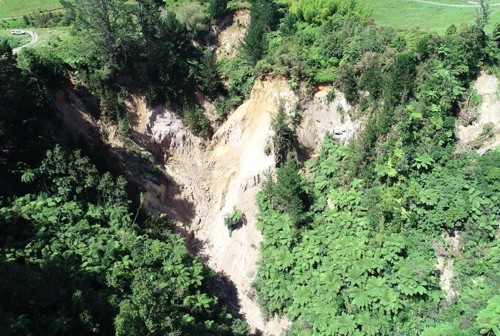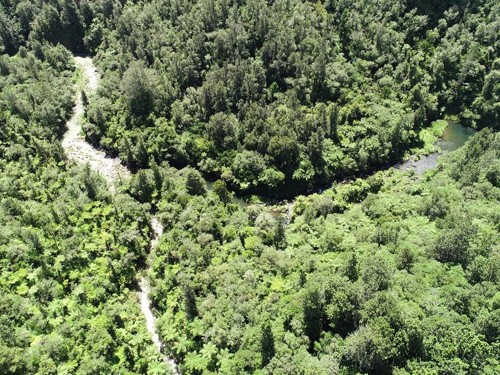

Record rain across the rohe causing erosion and river discolouration
Multiple slips and erosion in the upper reaches of catchments across Bay of Plenty are washing sediment into local rivers and estuaries and causing them to discolour.
At sites measured by Bay of Plenty Regional Council there has been an average of 200% of normal rainfall over the past three months (Jan, Feb, March 2023) – this means that catchments are receiving around twice as much rain as usual.
Regional Council Compliance Team Leader Trudy Richards says after rain events the Council’s Pollution Hotline often receives reports of sedimentation or discolouration of streams, rivers, and estuaries.
“Our team investigates reported incidents to locate the source of the sediment, assess the environmental impact and whether there is any non-compliance” Ms Richards says.
“Since early January, we have been receiving reports of the Omanawa River running dirty. Our investigation shows a significant landslip that is still discharging sediment into the river. The landslip system has been eroding long-term however previous remedial work undertaken has worked well up until this point."
"There is also a groundwater spring in the middle of the slipped face, along with surface water that flows over it during rain. A number of teams within Council are currently working together to quantify the effects of the sediment discharge and consider options for run-off control”, she says.
Ms Richards says while there are construction sites further downstream in the Tauriko area, the compliance team has confirmed the river is discoloured before it reaches the earthworks areas. The earthworks sites are closely monitored with their own dedicated environmental teams on site and Council compliance officers inspecting regularly.
“More recently the Little Waihī Estuary has also been discoloured. Investigations throughout the catchment reveal the Pokopoko stream and the Pongakawa stream were running brown and turbid due to multiple slips and erosion in the upper reaches.”
”We would like to thank our communities for reaching out to us to report their concerns about damage to the environment. Sediment in streams and estuaries does have a negative effect on the ecosystems so it is important that we hear about it and are able to track it back to the source. If the team finds non-compliant activities taking place in the catchments, this will be further investigated and enforcement action considered.”
To call the 24/7 Pollution Hotline, phone 0800 884 883.
- ENDS -
Background
Bay of Plenty Regional Council Process for investigating discolouration to our waterways:
- Complaints received via 24/7 Pollution Hotline 0800 884 883
- Team investigates, takes water samples, checks known or consented sites, may use a drone to follow streams and establish source of the issue
- Assess compliance status
- Photograph and report findings
- Contact landowners and determine what actions can be taken to try and minimise impacts on the environment
- Take regular samples and surveys to determine the ongoing impact and monitor whether situation is improving over time
- Consider enforcement action where necessary.
The following images are from 17 April, 2023, of slips along Pokopoko Stream which feeds into the Kaikopu Canal:

Erosion from a potential tomo depositing sediment overland and into the Pokopoko Stream.
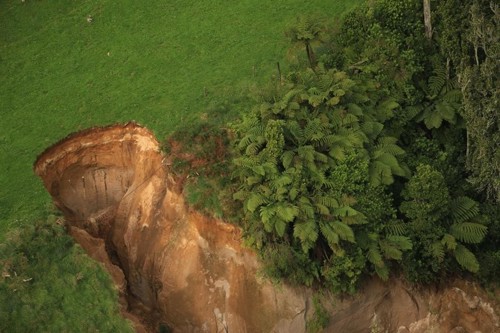
Slip above Pokopoko Stream.
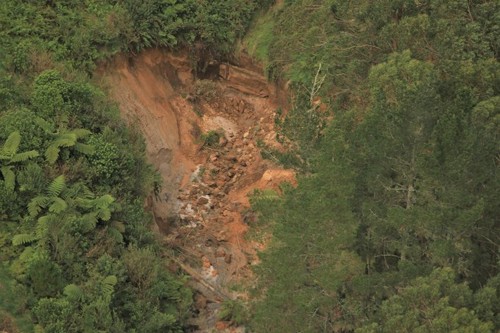
Spring water mobilising slip material at the head of a gully.
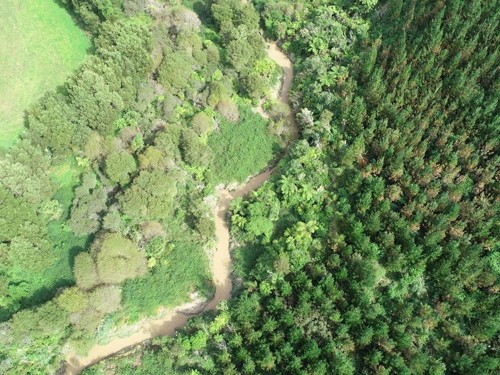
Pokopoko Stream running very discoloured as a result of slips in the catchment.
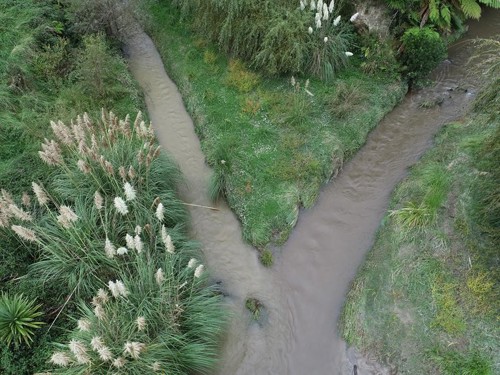
Confluence of Waiari Stream and Oeuteheuheu Stream by Mystery Valley Road.
Images below are from 19 January 2003 of (1) the major slip in the Omanawa Stream catchment (note the vehicle on the bank for scale) and (2) where the source of the discoloured water enters Omanawa Stream:
